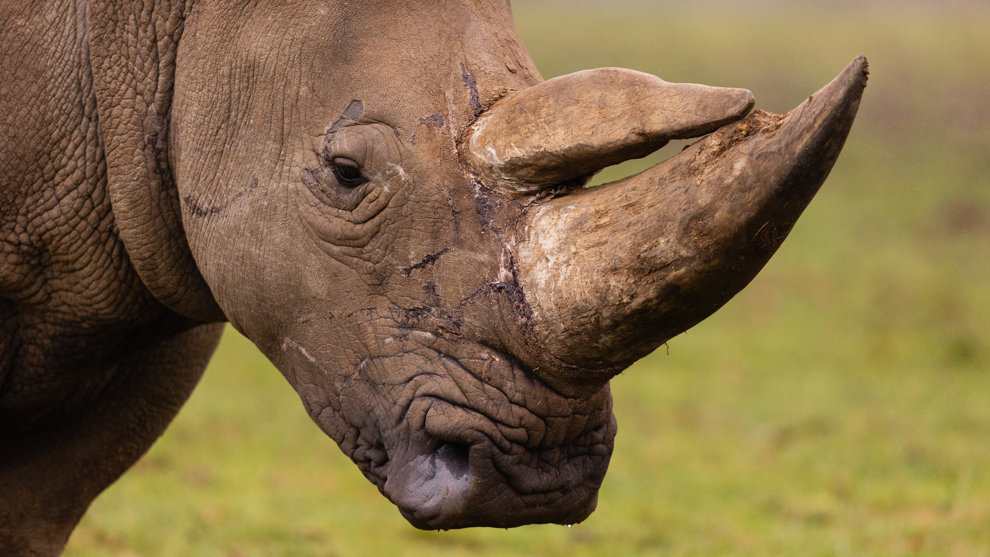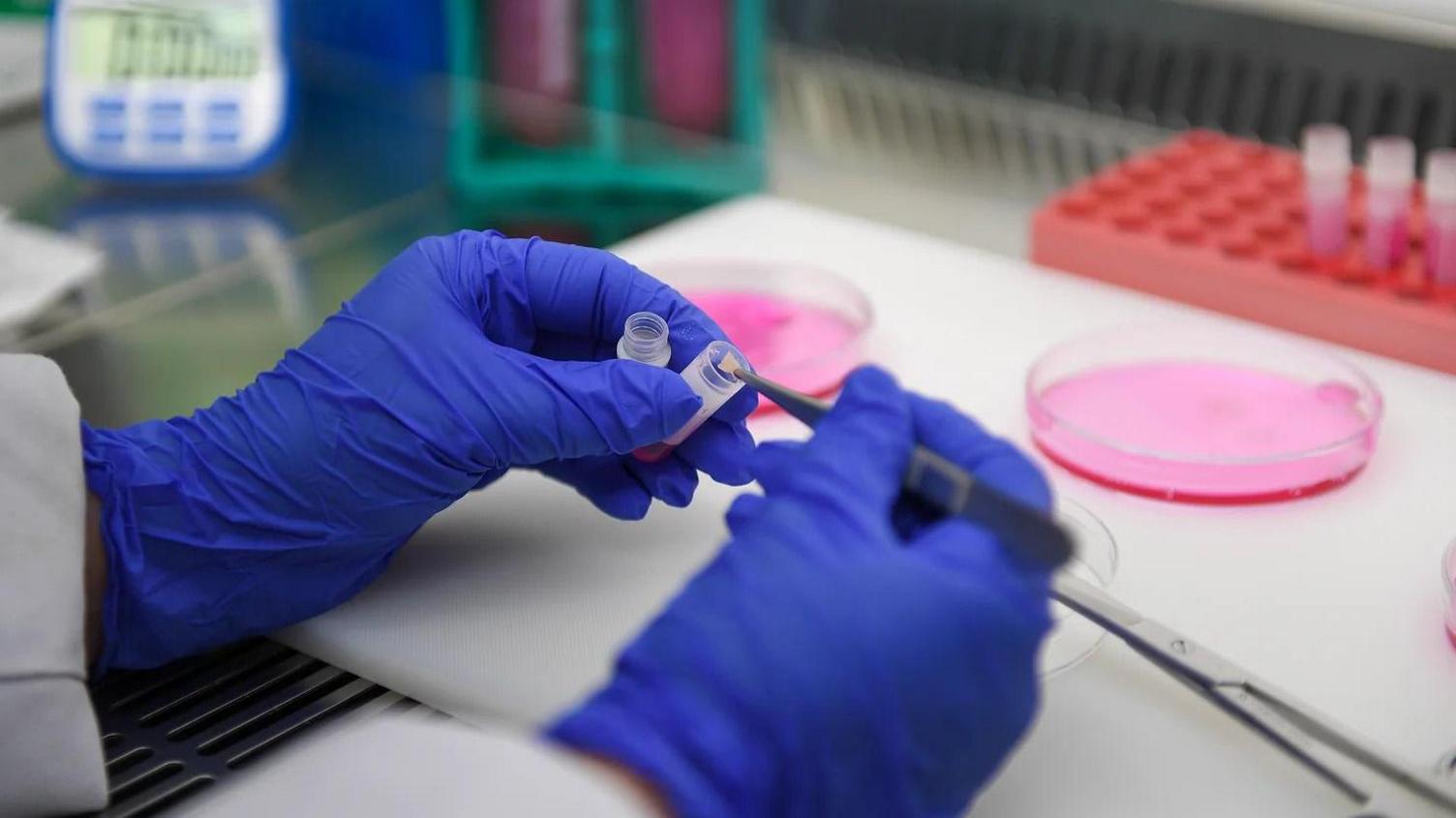Cells from dead rhino could bring new life

Living cells have been created from a tissue sample taken from a recently deceased rhino in 2021
- Published
A skin sample from a rhino could bring the promise of new life thanks to the work of a wildlife charity, four years after the rhino's death.
The 40-year-old southern white rhino from Whipsnade Zoo died in October 2021, with vets teaming up with three specialist groups to collect tissue samples from the dead animal.
Now, Shropshire-based charity Nature's SAFE has created "millions" of new living cells from the sample. It believes this is the first time this has happened in the UK.
The charity, based in Whitchurch, said it was the first stage in an innovative process that could allow scientists to develop new egg or sperm cells from this rhino.
The Shropshire company bringing species back from extinction
It would enable the rhino to contribute to the breeding population of southern white rhino for years into the future, despite her having died in 2021.
Nature's SAFE preserved a skin sample from the rhino's ear while it was still in a living state, with the charity banking its hope upon the cells remaining alive while preserved at -196C, so that when thawed out in the future, they could be revived and cultured to create fresh cell lines.
A spokesperson for the charity said: "Although it may sound like science fiction, this technology is already developed in mice, demonstrating its potential to assist reproduction in other animal species too."

Scientists revived the skin sample and used it to create new living cells
In April, the cells were carefully removed from the liquid nitrogen storage tanks and thawed.
Nearly four years after the rhino's death, the team have successfully cultured these and have grown new cell lines.
Lucy Morgan, the lab technician behind this success, said: "These cells represent living DNA from this rhino that is readily available for conservation use even though the rhino itself is deceased."

The charity says if the species is ever threatened with extinction in the future, it could be saved by this development
Nature's SAFE, described as a "bio bank", has now stored biological samples from 300 species, including 37 which are critically endangered and four which are extinct in the wild.
Its ambition is to save animals from extinction by protecting the genetic diversity of wild animal species and supporting technologies, like artificial insemination and in-vitro fertilisation, to maintain and restore healthy animal populations.
Debbie Rolmanis, chief operations officer, said: "By preserving and cultivating skin cells from threatened species, we are building a living library of genetic material that can be used to help restore genetic diversity to declining animal populations and prevent extinction.
"The key benefit of utilising skin cells is that we can obtain them easily and continue to regenerate them indefinitely; they are not a finite resource. This provides a powerful, proven way to protect DNA within a functional cell."
Commenting on the reanimation of the rhino's cells, Tullis Matson, founder and chair of the charity, said: "This could be an absolute game-changer moving forward. Now we've proven that this rhino's cells are truly in a living state even though she passed away almost four years ago.
"This is a powerful tool for protecting many more of our critically endangered species; animals like the mountain chicken frog or Lake Patzcuaro salamander, which otherwise might have fallen into extinction, could be saved using these new bio-banking technologies.
"We are over the moon - this brings hope not just to the southern white rhino, but to any species on the brink!"
Get in touch
Tell us which stories we should cover in Shropshire
Follow BBC Shropshire on BBC Sounds, Facebook, external, X, external and Instagram, external.
Related topics
- Published12 May

- Published21 April

- Published3 December 2024
